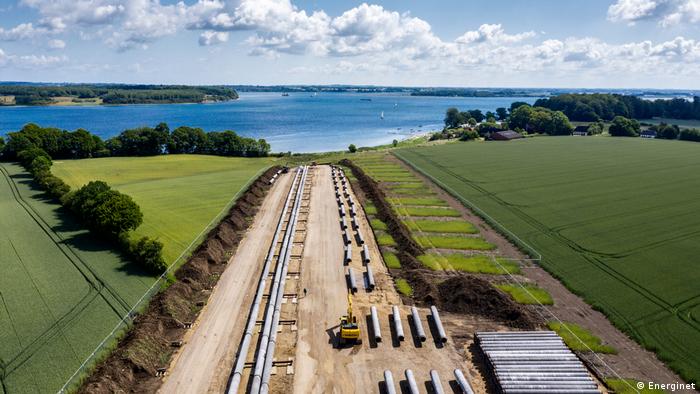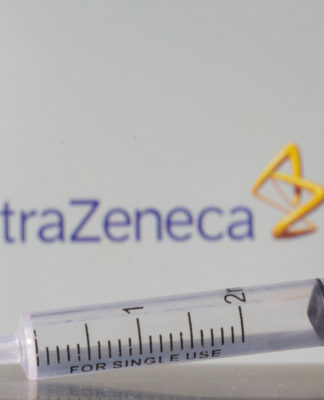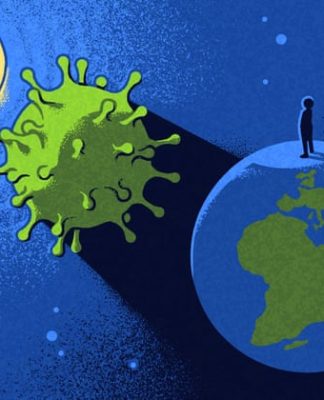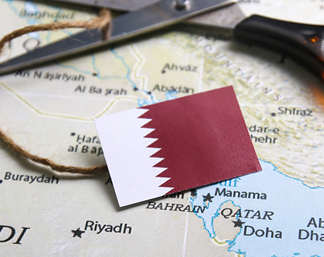BUSINESS
Baltic Pipe speeds up exit from Russian gas
Government representatives from Poland, Denmark and Norway have opened the new Baltic Pipe, a pipeline which will take natural gas from Norway via Denmark to Poland.
Baltic Pipe
Baltic Pipe is meant to be Poland’s gas lifeline after Russia has cut it off from supplies
“The era of Russian domination of gas is coming to an end, an era marked by blackmail, threats and coercion,” Polish Prime Minister Mateusz Morawiecki said Tuesday at the symbolic inauguration of
the Baltic Pipe compressor station in Goleniow near the Polish port city of Szczecin.
About 100 kilometres (60 miles) east of Denmark and 75 kilometers north of Germany and Poland, two pipelines meet silently in the dark depths of the Baltic Sea. One is heading from Russia to Germany, the other from Norway to Poland.
Russia’s newly built Nord Stream 2 pipeline was mothballed amid sanctions against Moscow over its war in Ukraine. Nord Stream 1 had still be supplying limited amounts of Russian gas to Europe. Both Nord Stream pipes are experiencing unexplained leaks.
The newBaltic Pipe , however, will now be pumping gas from Norway to Poland via Denmark.
As metaphors go for Europe’s changing energy security priorities, this one is hard to beat.
Industry insiders widely expect Russian exports to Europe to fall from currently around 200 billion cubic metres (7. 7 trillion cubic feet) to between 50 billion cubic meters (bcm) and 75 bcm by 2030.
“Everyone wants to shift away from Russian gas, although we will still need to cooperate with Russia in the long term,” Torben Brabo, CEO of Energinet Gas TSO — the Danish national transmission system operator for electricity and gas — told DW.
In late April, Russia’s state-owned gas company Gazprom cut Poland off from its annual gas supply of 10 bcm — about 45% of Poland’s domestic demand — six months before its long-term contract expires. At nearly 96%, Polish gas storage tanks are the most-filled in the EU, but Poland has long said it was going to end the contract with Gazprom anyway.
Baltic Pipe is now operational, and will function alongside extensions to a liquefied natural gas (LNG) import terminal in Swinoujscie, northwest Poland. “In these severe times this is a very timely project,” Brabo said.
Baltic Pipe is a joint venture between Polish firm Gaz-System and Danish firm Energinet and estimated to cost between $1.6 billion (€1.54 billion). It’s an offshoot of the existing Europipe II pipeline from Stavanger in Norway to Dornum in Germany on the North Sea bed.
It then runs east of Europipe II on the bottom of the North Sea until landfall near the western Danish town of Varde. Then it runs through Denmark until going back underwater in the Baltic Sea near the island of Zealand before turning south for landfall in Pogorzelice in Poland, situated 60 kilometers (37 miles) east of Swinoujscie, where Poland is extending its LNG import capacity.
A map showing the rout of the Baltic Pipe pipeline
Russian threats
Baltic Pipe comes amid mounting tensions over Russian gas deliveries to Europe. Russian gas giant Gazprom said earlier this year that it was curbing supplies through the Nord Stream 1 undersea pipeline, The company blamed the delayed return of equipment that had been sent to German company Siemens for repairs.
Robert Habeck, Germany’s economy minister and vice chancellor, said the move was intended to drive up prices. “It is obviously a strategy to unsettle and drive up prices,” he said, adding: “We can currently buy the necessary quantities from the market, albeit at higher prices.”
Danish Defence Minister Morten Bodskov told reporters back then that Denmark “must accept that the Baltic Sea is becoming a high-tension area.”
Play Video0:31 min
Polish PM Morawiecki: ‘Poland has prepared to diversify gas supplies’
Capacity in focus
Poland’s state-owned gas grid operator Gaz-System said in summer the new pipeline’s capacity had been booked up to 80% and there was enough time to get that up to 100% before demand began climbing back up in the cold season. Polish media reports put the figure at 50%.
By October 1, about 75% of the full annual capacity of 10 bcm should be ready and 100% by January, Energinet’s Torben Brabo said.
PGNiG operates several exploration concessions on the Norwegian continental shelf and wants to pump up to 4 bcm of gas as part of the Baltic Pipe’s capacity it has booked. This has raised hackles in some parts of the Norwegian gas industry.
In a statement to DW, PGNiG said the group is “consistently and successfully striving to increase the volumes of its own natural gas production in Norway.” The company is aiming to achieve this with “acquisitions and investments in the deposits already owned.”
PGNiG has the goal of extracting 3 bcm of gas from Norway in 2022 — 112% more over the previous year — and 4 bcm in 2027. A recent investment in Norway’s Orn gas field is intended to secure an additional 0.25 billion cubic meters “in the coming years,” the statement said, as PGNiG is determined to ensure the booked capacity “is fully utilized.”
Alternatives
Albrecht Rothacher, an ex-EU diplomat from Germany, thinks it would be much easier for the EU to connect Baltic Pipe with the northeastern German town of Lubmin, where Russia’s Nord Stream 1 and 2 arrive.
Lubmin is just 62 km away from Poland and already the starting point for the Opal pipeline, which links Nord Stream 1 with onshore European gas grids, running from northern Germany to the Czech Republic and boasting an annual capacity of 36 bcm of natural gas. A second, smaller pipeline, NEL, also starts in Lubmin and already links Germany with Dutch gas fields.
“Both capacities are meant to accommodate for the Nord Stream 1 and 2 volumes,” Albrecht Rothacher told DW.
This article was updated on September 27,2022.
Edited by: Uwe Hessler, Hardy Graupner
DW RECOMMENDS
US: Nord Stream 2 will not move forward if Russia invades Ukraine
US State Department spokesman Ned Price said the US would work with Germany to ensure the gas pipeline does not begin operations if Russia invades Ukraine, German Foreign Minister Annalena Baerbock confirmed.
Gazprom to further cut gas supplies to Germany via Nord Stream
The Russian energy giant said it was cutting supply volumes to Germany through the Nord Stream 1 pipeline by roughly another third, after an initial reduction on Tuesday.
AUDIOS AND VIDEOS ON THE TOPIC
Lithuania’s LNG terminal helps Europe to cut Russian gas addiction
Date 27.09.2022
Author Jo Harper
Related Subjects Poland, Baltic Sea
Keywords Nordstream 2, Nordstream, gas, LNG terminal, Poland, Swinoujscie, Baltic Sea
Feedback: Send us your feedback.
Print Print this page
Permalink https://p.dw.com/p/4CxaJ

























